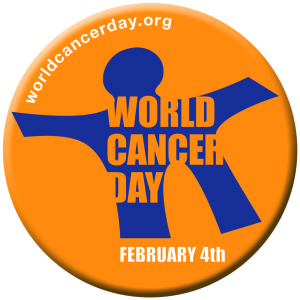 Cancer is among the leading causes of mortality worldwide. According to the World Health Organization, approximately 14 million new cases and 8.2 million cancer related deaths were recorded in 2012. If no major breakthroughs are made in the field, that number is expected to rise by 70 percent over the next two decades. In honor of World Cancer Day, we’re taking a look at a few ways electrochemical and solid state science aids in the fight against cancer.
Cancer is among the leading causes of mortality worldwide. According to the World Health Organization, approximately 14 million new cases and 8.2 million cancer related deaths were recorded in 2012. If no major breakthroughs are made in the field, that number is expected to rise by 70 percent over the next two decades. In honor of World Cancer Day, we’re taking a look at a few ways electrochemical and solid state science aids in the fight against cancer.
Electrochemical Biosensing for Cancer Detection
By taking biopsy slices for colon cancer, researchers were able to use electrochemical biosensors to distinguish between cancerous and normal epithelial tissues. This development helped promote rapid cancer detection by eliminating pretreatment and providing results obtained within minutes of biopsy removal. Read the full paper here.
Polymer Based Sensors to Diagnose Breast Cancer
There are many issues that mammography faces, including the uncomfortableness of the screening and exposure to radiation. In order to solve this issues, electrochemical scientists developed an Electrical Impedance Tomography (EIT) system. This radiation-less technique aims to enhance early detection capabilities by generating a 3-D map of the breast. Read the full paper here.
Impedance Sensors to Study Cancer Cells
Scientists are always looking for new ways to study cancer cells in order to gain a greater understanding of the disease and be able to collect data in a more efficient way. In this paper, an electrochemist used an impedance-based method and concluded that it has the potential to be a useful analytical approach for cancer research. Read the full paper here.
Sensors Based on Nanostructured Materials Screen for Specific Biomarkers
With this development and the recovery tests performed using whole blood samples, scientists proved that the new multimode sensors could be used for screening tests of whole blood with high reliability. Read the full paper here.
Using Semiconductor Quantum Dots to Detect Breast Cancer
Current day breast cancer detection has a few flaws that electrochemists and solid state scientists are always looking to improve upon. Here, scientists used a method that utilized quantum dots to observe breast cancer cells as fluorescent cells that had brighter signals compared to those labeled with organic dye. This development could help detected breast cancer in its early stages via a fluorescent signal generator. Read the full paper here.
Electrochemical and solid state science and technology impact many of the world’s greatest dilemmas. Head over to the Digital Library to gain a greater understand of how crucial this field is to solving the biggest issue the world is currently facing.
P.S. Make sure to sign up for our RSS Feeds and e-Alerts to stay up-to-day on current trends.


